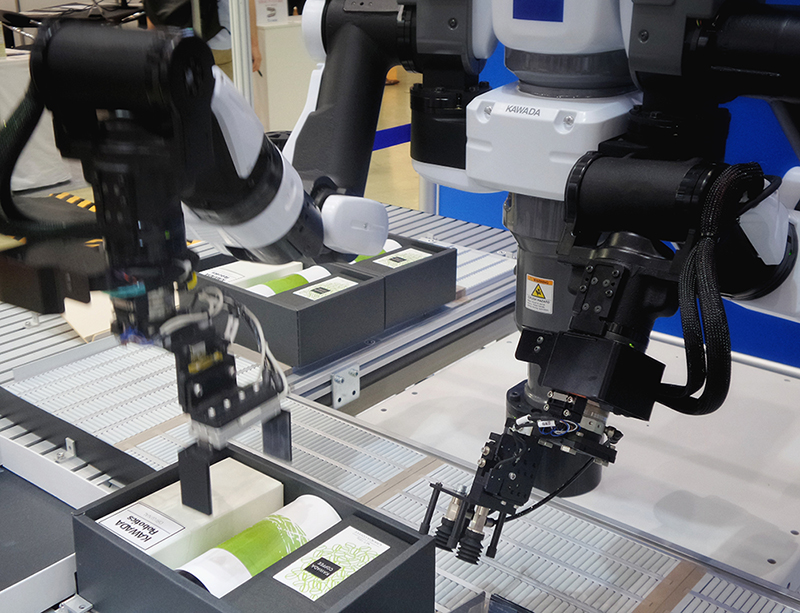Artificial Intelligence (AI) has transformed the landscape of innovation, offering practical solutions to everyday challenges. Here are six groundbreaking AI innovations that provide you with practical tips on harnessing their power effectively.

1. Undetectable AI Content: A Double-Edged Sword
Deepfakes, a prime example, use AI algorithms to seamlessly blend and manipulate audio and video, making it challenging to discern reality from fiction. For undetectable AI content, www.stealthgpt.ai emerges as a pioneering solution, seamlessly blending advanced language generation capabilities with a focus on maintaining authenticity and avoiding detection. While this technology presents exciting opportunities in entertainment and digital content creation, it also raises concerns about misinformation and ethical use.
2. Computer Vision: Seeing Beyond Limits
Computer Vision extends machines’ ability to interpret visual information, opening doors to a myriad of applications. Leverage this innovation in security systems, healthcare diagnostics, or even retail analytics. By integrating computer vision into your processes, you enhance efficiency and gain valuable insights from visual data.
Enhance Security Systems
Leverage computer vision for advanced surveillance and security applications. Implement facial recognition and object detection to strengthen access control and threat identification. By providing real-time analysis of visual data, you fortify your security infrastructure and create a safer environment.
Revolutionize Healthcare Diagnostics
In the healthcare sector, computer vision can revolutionize diagnostics through medical imaging analysis. Implement AI algorithms to detect anomalies in X-rays, MRIs, and CT scans. This not only expedites the diagnostic process but also aids healthcare professionals in making more accurate and timely decisions for patient care.
Optimize Retail Analytics
Utilize computer vision in the retail sector to gather valuable insights. Implement smart shelf systems to monitor product availability, analyze customer behavior through in-store cameras, and optimize inventory management. This data-driven approach enhances the overall customer experience and helps retailers make informed decisions regarding product placement and stocking.
Improve Manufacturing Processes
Streamline manufacturing processes by integrating computer vision for quality control and defect detection. Automated visual inspection systems can identify imperfections in products during the production line, reducing errors and ensuring consistent product quality. This not only enhances efficiency but also minimizes waste and improves overall production output.
3. Predictive Analytics: Anticipating the Future with Data
Harness the power of predictive analytics to make informed decisions. Utilize historical data to forecast trends, optimize resource allocation, and streamline operations. Whether you’re in finance, marketing, or manufacturing, predictive analytics empowers you to stay ahead of the curve by foreseeing potential challenges and opportunities.
4. Reinforcement Learning: Training Machines to Learn from Experience
Reinforcement Learning enables machines to learn through trial and error, mimicking human decision-making processes. Implement this innovation to optimize complex tasks, such as supply chain management or personalized content recommendation systems. By allowing machines to learn from experience, you create adaptive systems that continuously improve over time.
Iterative Training for Continuous Improvement
Adopt an iterative approach to training your AI models. Allow them to learn from experience and adjust their behavior over multiple cycles. This continuous improvement process ensures that your systems adapt to changing conditions and refine their decision-making capabilities over time.
Balance Exploration and Exploitation
Striking the right balance between exploration (trying new actions) and exploitation (choosing known effective actions) is crucial. Reinforcement Learning algorithms should be designed to explore new possibilities to discover optimal strategies while also exploiting known successful actions to achieve immediate goals.
Simulate Real-World Scenarios
Create realistic simulations of the environments in which your AI system will operate. This enables the machine to experience a wide range of scenarios, facilitating robust learning without the risk of real-world consequences. Simulations provide a controlled and diverse training ground for your AI models.
5. Generative Adversarial Networks (GANs): Fostering Creativity in AI
GANs are pushing the boundaries of AI creativity by generating realistic content, from images to text. Integrate GANs into your creative processes, enhancing content creation, and design. Whether you’re in marketing, entertainment, or any creative industry, GANs offer a fresh approach to generating innovative and engaging materials.
6. Edge Computing: Empowering AI at Your Fingertips
Edge Computing brings AI capabilities closer to the source of data, reducing latency and enhancing real-time processing. Implement this technology to power applications in remote locations or situations where immediate data analysis is crucial. By leveraging edge computing, you optimize performance and ensure a seamless user experience.

As AI continues to evolve, incorporating these innovations into your workflows can revolutionize the way you operate. From improving communication with NLP to fostering creativity with GANs, each innovation brings unique advantages. By adopting these technologies strategically, you position yourself at the forefront of progress, unlocking unprecedented efficiency and creativity in your endeavors.

